How Sonic Team made the iconic hedgehog feel like the fastest creature on the planet
Interview: ‘This current generation of hardware has almost eliminated that limitation…’
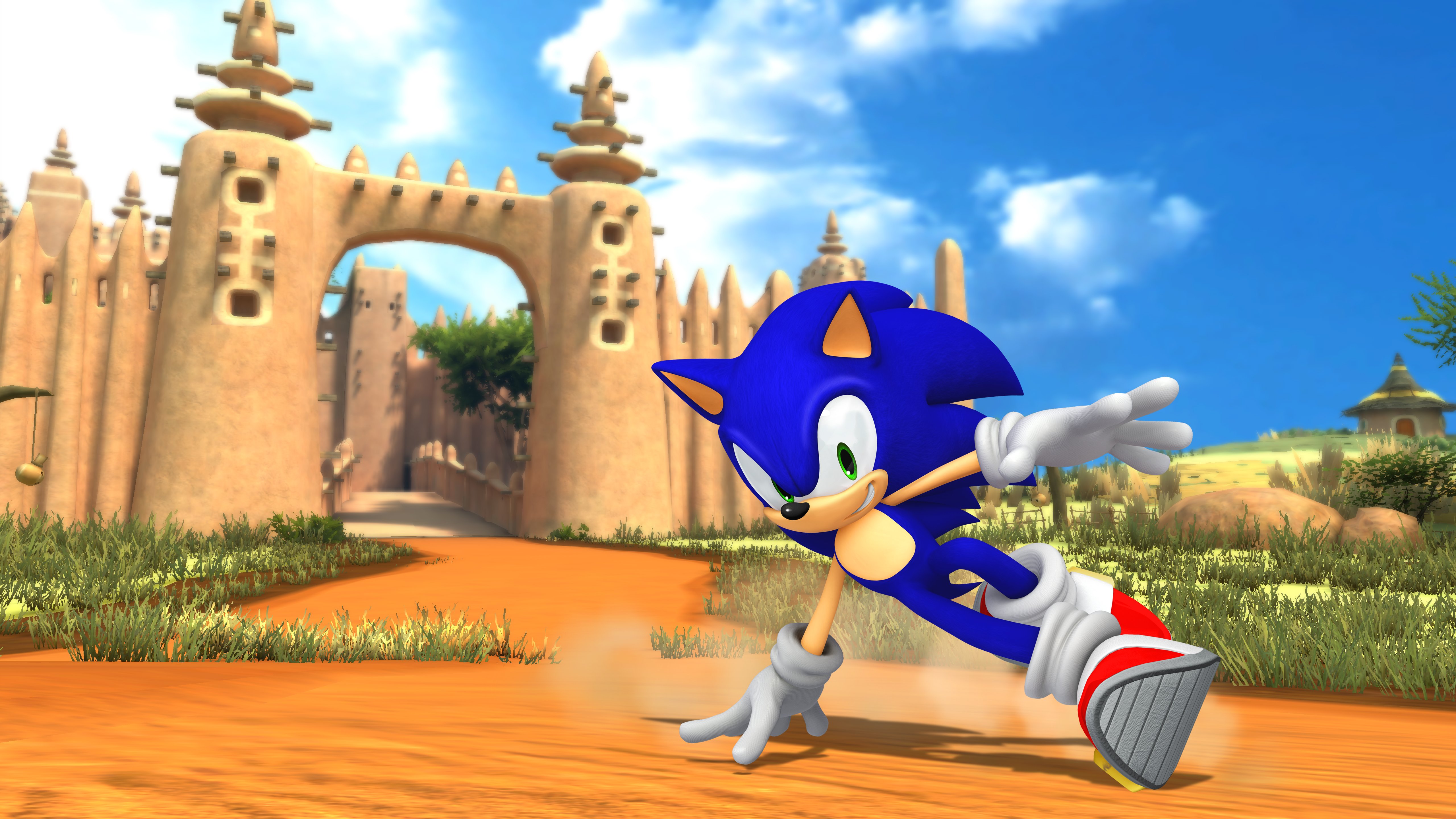
As Sonic is in the middle of celebrating his 30th anniversary, it's hard to not look back at the legacy of what started out as a bold attempt to rival Mario in the heyday of the console wars. Three decades on, 920 million games sold, over six billion grossed from franchise revenue alone, and the Blue Hedgehog has solidified himself as one of the biggest faces in video games.
The original Sonic trilogy was an ingenious feat of game design - pushing the Sega Genesis to new heights, something the character continued to do with proceeding consoles. The Sonic Adventure duo on the Dreamcast showcased the speed possibilities in a 3D environment, however, it wasn't until the implementation of the 'Boost' mechanic that audiences truly felt what it means to be the fastest creature alive.
- Best retro games consoles: the top nostalgic gaming revivals
'Dynamic running'
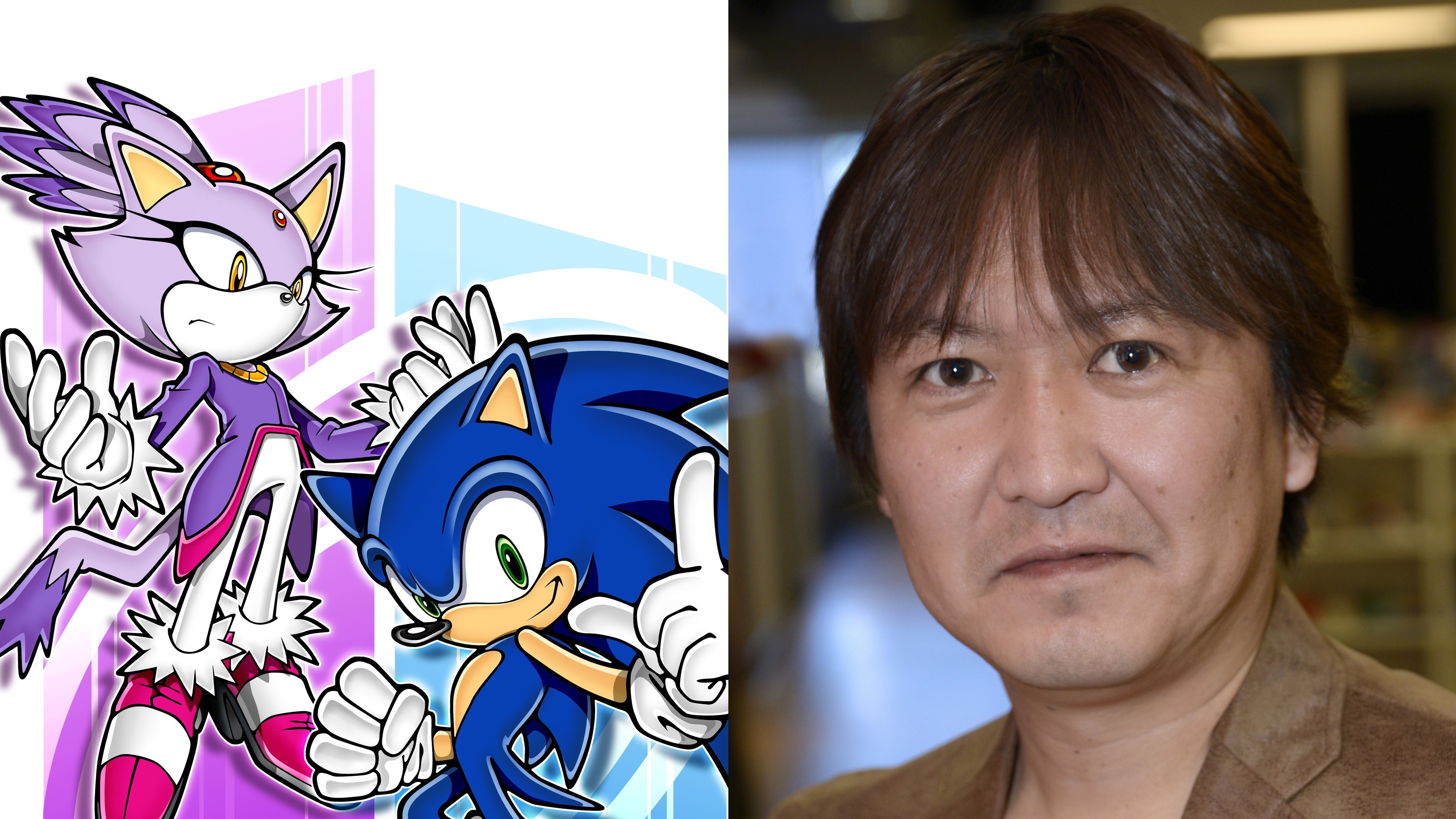
"Sonic Rush had a special feature of dynamic running across the top and bottom screens, and the boost was an instantaneous and explosive acceleration that fit nicely with the design," Sonic Team head Takahashi Iizuka tells us via email.
"That boost allowed people to hit high speeds, anywhere in the stage, and that became a huge step in a new direction for the design of the game."
Takahashi Iizuka - Sonic Team
The idea behind this is that Sonic would go from running at a standard pace to being propelled forward in an explosive manner, where the player would then need to react to oncoming obstacles. Sonic Rush, a 2D Nintendo DS exclusive, was the first to introduce the mechanic back in 2005 (originally known as the Tension Gauge), before following it up in its sequel, Sonic Rush Adventure.
"Up until then, interacting with objects or going downhill was the main way of getting top speed," continues Iizuka. "But now, that boost allowed people to hit high speeds, anywhere in the stage, and that became a huge step in a new direction for the design of the game."
The developers quickly became obsessed with the sensation of amping up Sonic's speed. That incredible feeling of passing by everything in sight like a fighter jet was addictive to all that got their hands on it. Sonic's speed, momentum, and the belief that nothing could stop him in his tracks, felt unparalleled in games.
Not long after, Sonic's 'Boost' made its way over to the mainline 3D games, starting with 2008's Sonic Unleashed. The globe-trotting title was broken into two halves: one where you controlled a Werewolf form of Sonic (known as the "Werehog") on a night, and another as the regular Sonic during the day. For Iizuka and the team, the mechanic played a major part in making the hedgehog feel "fresh" and "exciting" after the 2D era. Up until this point, the focus of Sonic was all about mixing high-speed action into a 3D platformer.
Get daily insight, inspiration and deals in your inbox
Sign up for breaking news, reviews, opinion, top tech deals, and more.
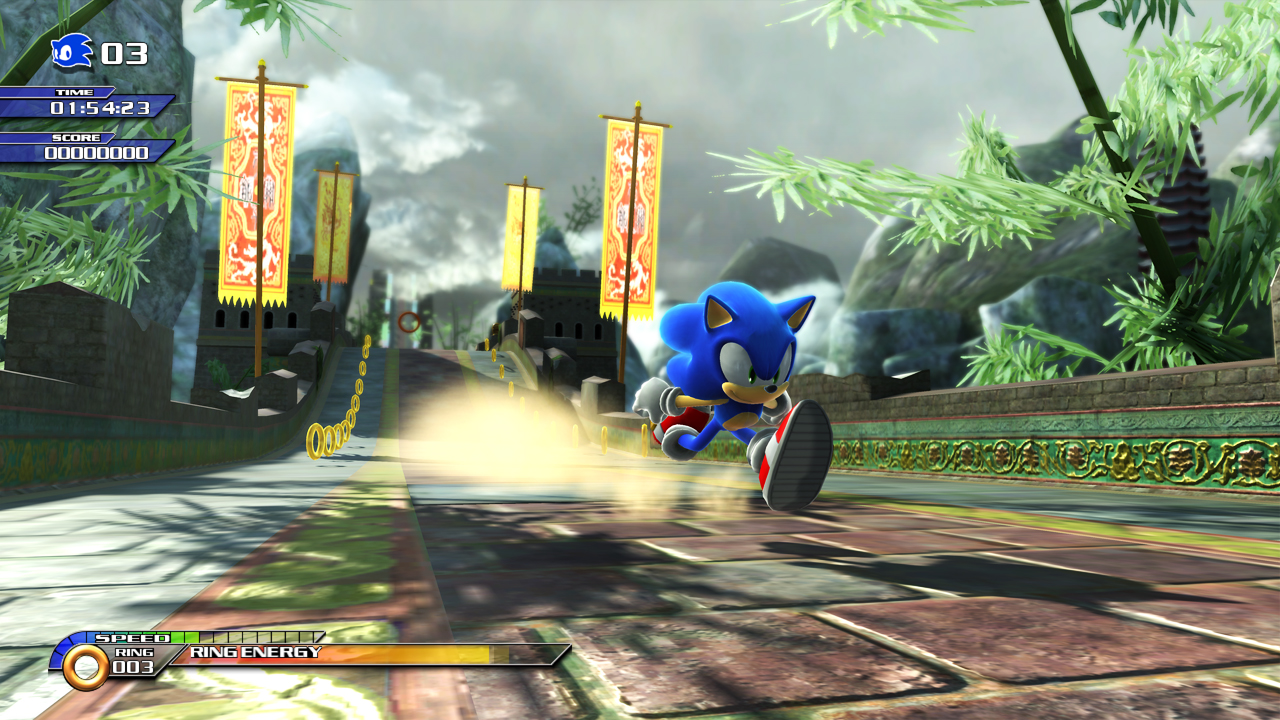
"Combining those two elements into one game style is extremely difficult, so with Sonic Unleashed we split the focus in two..." he says, referring to the decision to introduce the Werehog.
While these levels evoked an old-school God of War-like gameplay that garnered mixed reception, the Day stages allowed Sonic to truly live up to his name for the first time ever. Thanks to the integration of the Boost Gauge (or Ring Energy Gauge on the PS3/Xbox 360, as it was called), Sonic was able to break the sound barrier by more than three times - achieving an approximate measurement of 2,889 miles per hour.
"The Day parts were all designed with a focus on high-speed as the core element. Because of that, we were able to create gameplay that excelled at capturing that essence of high-speed," Iizuka says.
Anyone that has played Sonic Unleashed will be aware of the major differences between the PS2/Wii and PS3/Xbox 360 versions, as the former suffered from cut content and struggled to achieve the same fast gameplay due to technical limitations and a different developer (Dimps). It wasn't until 2010's Sonic Colors that a Nintendo console got to see what the new mechanic could really do, though developing for different systems naturally brought about their own set of complications.
Data streaming
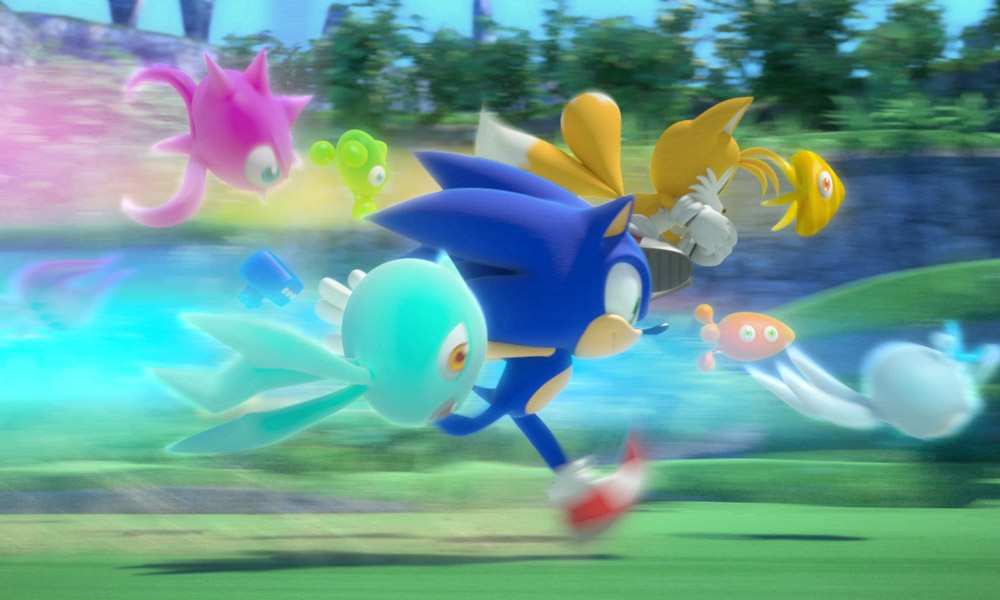
"Moving through the world at super high speeds requires long stages, and since it was impossible to load all that data into memory, we had to develop data streaming techniques that would read in data from the disc as you were progressing through the stage at that high-speed pace," Iizuka explains about the Wii's capabilities. "We were challenged to create a lot of very advanced systems and processing…"
"Moving through the world at super high speeds requires long stages, and since it was impossible to load all that data into memory, we had to develop data streaming techniques that would read in data from the disc as you were progressing through the stage at that high-speed pace."
Takahashi Iizuka - Sonic Team
Instead of being generated by Rings like previous titles, Colors introduced the alien species known as Wisps, which could be used as power-ups and created a shockwave-like effect on screen every time the burst of acceleration was utilized. It was even more impressive considering lower power consoles like the Wii simply couldn't handle Sega's custom-built Hedgehog Engine, which focused on next-gen lighting and visual effects
Launched as an exclusive on the Nintendo machine, Colors sold over two million copies with fan reception steadily growing over the years. This, in part with the opportunity to combine with the Hedgehog engine, may be why Sega has decided to remaster the game for the character's 30th anniversary.
Sonic Generations, ironically, became the next title to take advantage of the mechanic to coincide with the franchise's 20th anniversary in 2011.
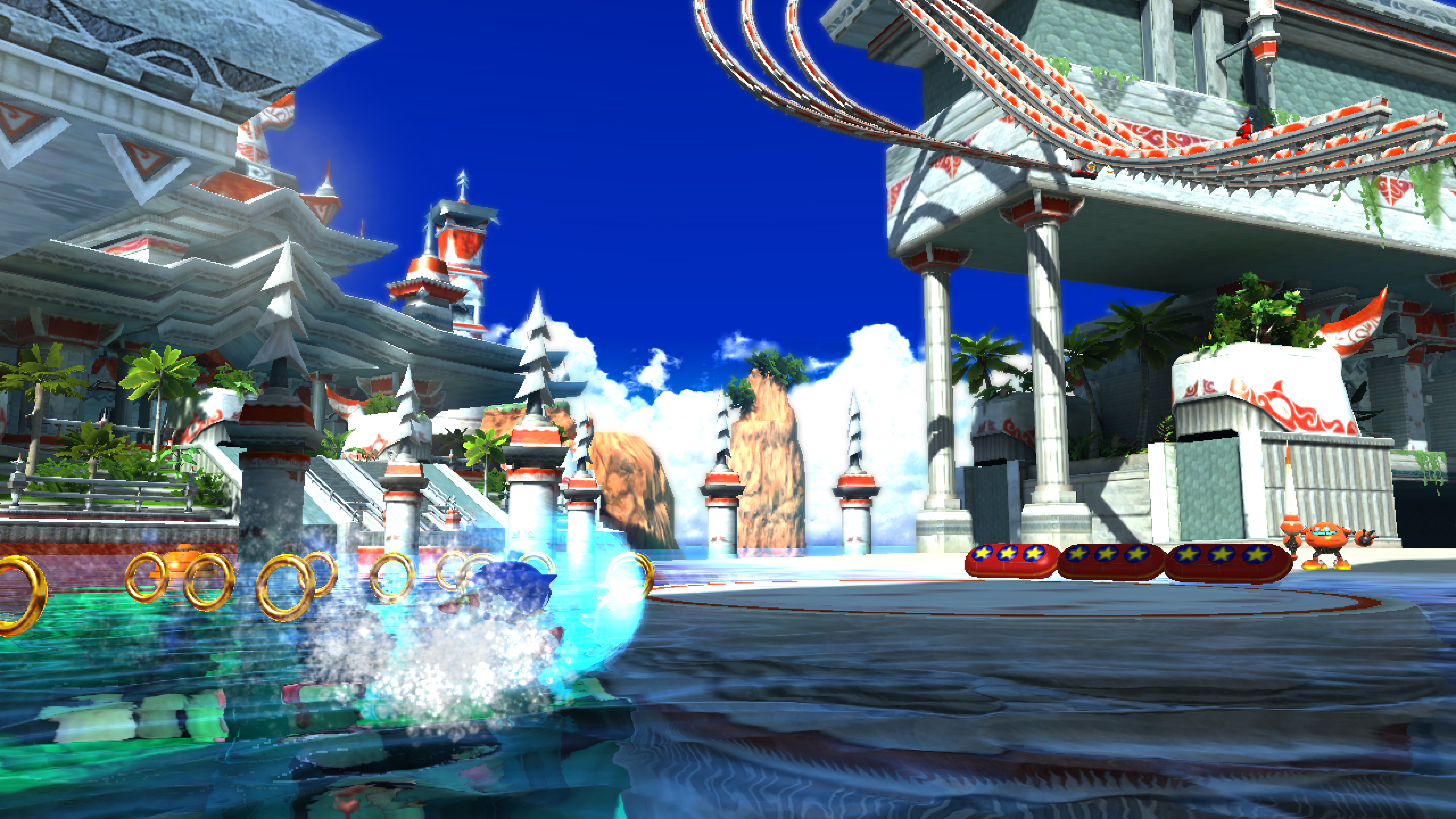
Divided into two different portions (noticing a trend here?), Generations split gameplay between a Classic Sonic and Modern Sonic style. Numerous fan-favorite levels from throughout the years made their return, giving players the chance to revisit them, this time with extra speed and specifically designed with the 'Boost' mechanic in mind.
From Sonic Unleashed onwards, Generations and its follow-ups reverted to the Ring set up, on top of offering new skills to continuously boost throughout stages. From a technical perspective, Sonic Team was always in a "constant battle" between the in-game boost speed and speed in which the data was streamed. To cope with this, the level design details were required to be left behind after Sonic had already passed through.
"As you are boosting through the world things pass by you so fast you couldn’t really react in time," Iizuka says. "So it was important to the game design to add in the 'Quick Step' and other fast movements for Sonic."
Allowing fast side-to-side movement to avoid oncoming obstacles, the move was actually first introduced back in 2007's Sonic and the Secret Rings, where motion was put on the back foot in favor of a predetermined path where the character continuously runs. It lacked that quintessential speed element and suffered in reviews and reception as a result, Regardless, the Quick Step maneuver transitioned to become a staple of the 3D mainline series.
Opting for familiar gameplay found in the Adventure titles, as well as a new "Parkour" system, Sonic Lost World skipped out on the 'Boost' mechanic altogether, opting to try its hand at a poor man's Mario Galaxy-esque imitation. It would be another six years before it returned in Sonic Forces, with the team looking to build from the Day levels in Sonic Unleashed by combining with the Wisps power-ups found in Sonic Colors.
Double Boost
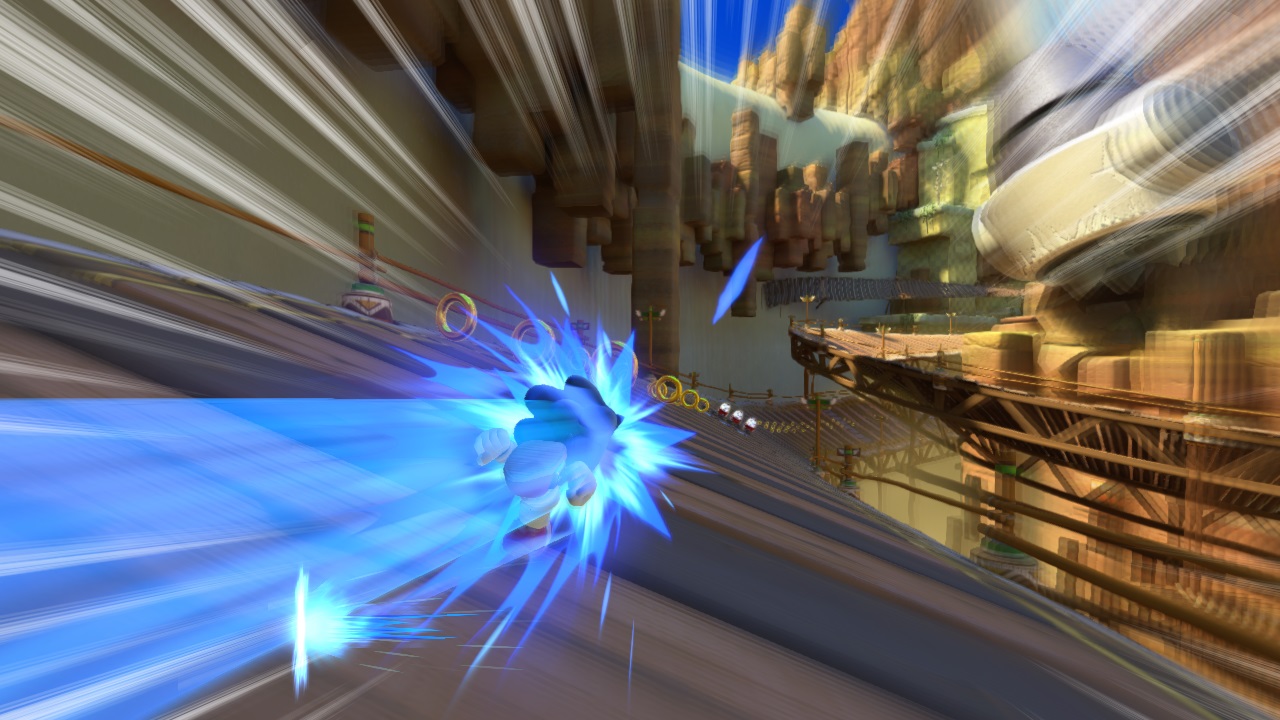
Iizuka confirmed that the studio "focused only on speed and started building in platforming gameplay while still keeping that 'Boost' mechanic". By using all of their tricks in the book from collective years of experience developing for last-gen hardware, it was further revealed that the 'Double Boost' add-on skill in Sonic Forces was the fastest boost Sega has ever put into a game to date. But what’s the next evolution of Boost?
After more than four years of silence, the next big Sonic project has been teased by Sega. With little detail given, the internet is already ablaze with theories on what Sonic in 2022 actually means. Will it be open-world? Will it be a sequel to Sonic Colors with the Wisps returning? Or will it be something brand new that taps into the power of the PlayStation 5 and Xbox Series X? Whatever the case the arrival of new technology and lightning-fast SSDs have now advanced to such a degree, that the true potential of Sonic's 'Boost' can finally be unlocked.
"It is not much of an overstatement to say that this current generation of hardware has almost eliminated that limitation, so we will probably push Sonic to run faster over a wider gameplay field in the future, " Iizuka says.
"However, there are still limitations to how quick humans can think and react with our brains, so game designers will still need to be thinking of both speed and fun to continue making interesting and compelling game experiences that maximize both elements."
Better performance and better hardware can mean a lot of different benefits to a lot of different franchises, yet for the fastest thing alive, it could be a genuine game-changer.
Matt is a full-time freelance journalist who specializes in arts, culture and tech – be that movies, TV, video games, or otherwise. He's also turned his hand to everything from mattresses to motorbikes as a journalist. Prior to this, Matt headed up the games and entertainment section at T3.com, alongside being published across TechRadar, IGN, Tom's Guide, Fandom, NME, and more. In his spare time, Matt is an avid cinema-goer, keen runner and average golfer (at best). You can follow him @MattPoskitt64.
